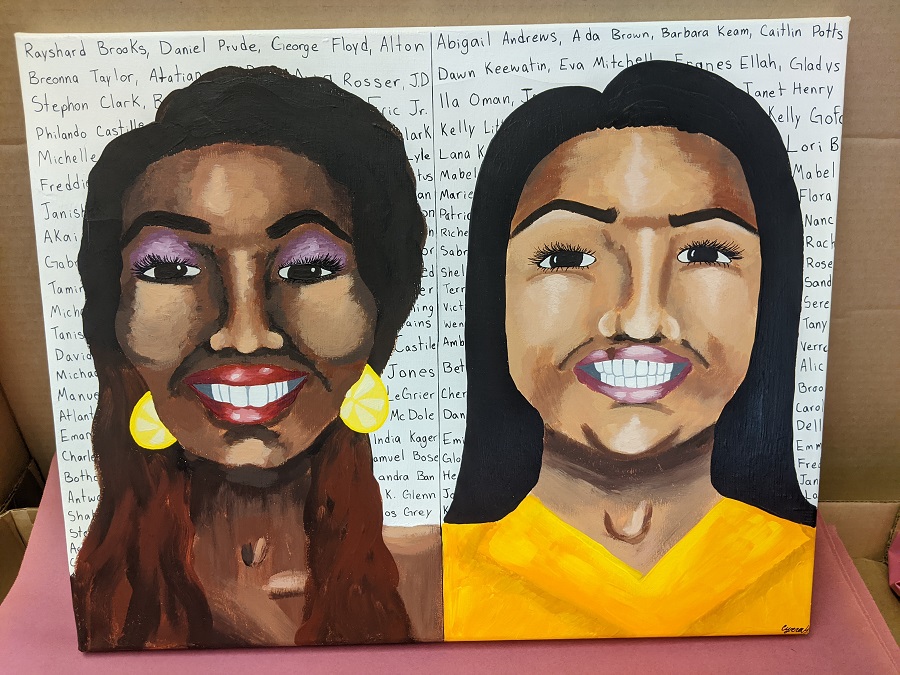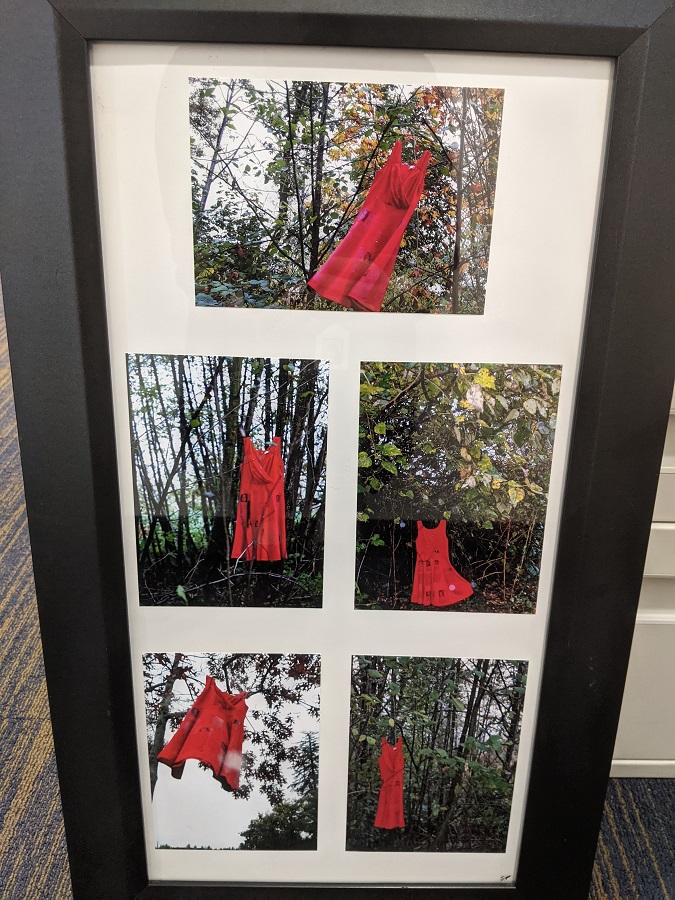Lord Tweedsmuir Secondary students highlight BIPOC issues through art

Two Grade 12 students at Lord Tweedsmuir Secondary have created compelling art projects to raise awareness for BIPOC (Black, Indigenous and People of Color) issues.
Cyrena Halbig and Sidney Trotman were each inspired to take on issues related to race and social justice through an artistic prompt from their art teacher, Ester Volpe, which encouraged them to think of how art can constructively showcase world issues and provoke thought.
"I try to stay informed and through my intake of general media, I heard someone say the simple act of Black and Indigenous people being happy and finding pride in their heritage is a form of protest against everything society has tried to build up against them - I thought that was very profound and I ran with it," said Halbig, noting the quote informed the title of her piece, BIPOC Joy is a Protest.
"I chose to do my piece on missing and murdered Indigenous women, and while doing my brainstorm, I came across the connection to red dresses in public art," said Trotman of her project, titled Fallen Sister. "There was an article about how they believe the colour red helps the souls of the missing and murdered to find their way home, and I wanted to incorporate that."
Halbig's piece showcases smiling portraits of a Black woman and an Indigenous woman, resembling TikTok stars Kissy Duerré, a Black transgender woman from Saskatoon, and Michelle Chubb, a Cree woman from Winnipeg, both of whom discuss issues around race and social justice on social media. In the background, Halbig wrote names of Black people who have been victims of police brutality and Indigenous women and girls who have gone missing or been murdered.
"I thought it would be an interesting contrast, to have pretty, smiling women who look so happy, and then if you read behind them and recognize the names, you can understand what they're for," she said.

For Trotman's piece, she used transfer paper to print images and stories of missing and murdered Indigenous women on the dress, then took photographs of it hanging from trees and flowing in the wind.
"The photos and the stories imprinted on the dress were to bring awareness and show it's not a small problem, it's a large problem and it's been happening for awhile," she said. "With the wind moving through the dress, it gives the photos movement and that feeling of something's there but it's missing."
Both Halbig and Trotman said they hope their projects will raise awareness for these issues and others that BIPOC people face that others may not know about or fully understand.
"I wanted to show that these people who have gone missing, they're not just someone we can walk past, they're real people, they have a story to their life," said Trotman. "I wanted to give them purpose and meaning so we can raise awareness and make it known."
"I hope it will be an eye opener," said Halbig. "When you see a happy Black or Indigenous person being proud of their culture, there's years of heavy history behind that smile. It's not as simple as waking up and being happy, it's so much deeper."

